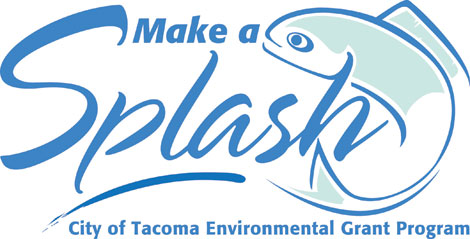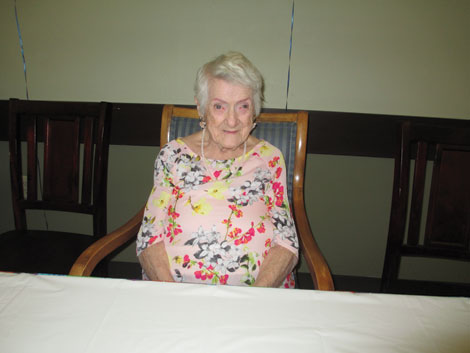Are you waterwise?
Too much or not enough water and never when you need it. That seems to be the longtime plight of gardeners. Add to this extended droughts, flooding and watering bans. What is a gardener to do? Answer: Become a waterwise gardener.
Waterwise is not just about growing drought-tolerant plants or eliminating plantings. It is a holistic approach to managing water on your site to let the rain soak in rather than creating runoff that overwhelms storm drainage systems and pollutes waterways, target watering to avoid wasting water, and design landscapes in a way that won’t generate too much work and require too many resources.
Tacoma Public Utilities and Tacoma Environmental Services Department offer some simple waterwise ideas and tips that can make a big difference. The agencies are confident you’ll find that being waterwise is good for your garden, the environment and your pocketbook. Start with one or more of these strategies, and see which are the best fit for you and your yard to conserve water and reduce time and money spent on plant care:
Natural Lawn Care
• Use an electric mulching mower, which chops grass clippings and blows them down into the turf, where they become a natural nutritional supplement that promotes water retention. Lawns maintained with an electric mulch mower need an average of one-third less fertilizer and 300 fewer gallons of water per year.
• Manage your lawns to reduce water use. Select drought-tolerant grass to reduce watering. Prepare the soil before seeding or sodding, or aerate and spread a thin layer of compost over existing lawns to increase water absorption and reduce runoff. Mow high to encourage deep roots that are more drought-tolerant and pest-resistant. Allow lawns to go dormant during hot, dry weather.
• If you’re going to hire a landscaping professional, go with one that offers sustainable and natural yard care services. A guide with helpful questions to ask landscapers is available at www.piercecountywa.org/naturalyardcare under their Natural Yard Care Library resources.
Smart Plant Choices
•Try low-maintenance plants, especially ones that are native to the local climate and soil conditions, because they require less water and fewer chemicals. For help choosing plants, contact the Master Gardeners program at 253-798-7170, or check out the great local plant lists and planting plans at King County’s Native Plant Guide website (https://green2.kingcounty.gov/gonative).
• Select the right plant for the growing conditions. Plants that thrive in normal growing conditions for your area will be healthier, require less care and need less water.
• Look for drought-tolerant plants that require less water once established.
• Use plants to prevent runoff and conserve water. Plant trees, shrubs and groundcovers to slow the flow of rainwater and increase the amount of water that stays in your landscape.
Healthy Soil
• Adding several inches of compost to the top eight to 12 inches of soil increases the soil’s ability to absorb and retain water. This means less runoff into the storm sewers and less frequent watering.
• Mulch the soil around trees, shrubs and other plants with several inches of woodchips, shredded leaves, evergreen needles or other organic material. Mulching reduces watering frequency and prevents soil compaction from heavy rainfall, thus increasing water absorption. It also adds organic matter to the soil as it decomposes.
• When using fertilizers and pesticides, consider the following: (1) Give plants a healthy diet. Use a slow-release, non-leaching organic nitrogen fertilizer like Milorganite (milorganite.com). You’ll encourage slow, steady growth so your plants will require less water and be less prone to insect and disease problems. (2) Use TAGRO, the non-toxic, fish-friendly soil products produced by the City of Tacoma that return nutrients to the soil while recycling wastewater biosolids. Visit www.tagro.org. (3) If you use commercial chemical fertilizers, follow the directions in order to prevent excess from running off into storm drains and polluting water. (4) Never dump unused garden chemicals into storm drains, which flow into waterways. Ditto for sinks, which drain to the wastewater treatment systems and then out to the bay. Instead, drop off unused yard chemicals for free at Tacoma’s Household Hazardous Waste Center at the former Tacoma Landfill (3510 S. Mullen St.), open 8 a.m. to 6 p.m. seven days a week, except holidays. (5) Don’t spread chemicals or fertilizers in the wind or rain. Wind can spread them where they aren’t wanted, and rain washes them into our local waterways where they promote the growth of algae and weeds that consume oxygen fish need to survive.
Water Savings
• Harvest rainwater. The ancient technique of capturing rainwater in jugs, barrels and cisterns has made a comeback. Collecting rain when it is plentiful and storing it until it is needed is one way to manage water for the landscape. Look for rain barrel workshops offered seasonally at the City of Tacoma EnviroHouse (www.cityoftacoma.org/envirohouse) and elsewhere in our area.
• Water plants thoroughly and only when needed. Water the soil, not the plant, using a watering wand, drip irrigation or a soaker hose so less water is lost to evaporation. Water early in the morning whenever possible to reduce water loss during the heat of the day and diseases caused by wet foliage at night.
• Look for and use clean wasted water. Collect the “warming water†typically wasted when preparing baths and showers. Use a bucket to collect this fresh water and use it for your container plantings and gardens.
All of these waterwise choices will help keep waterways healthy and vibrant, which is good for everyone’s quality of life. Yard chemicals are one of the sources of millions of pounds of toxic pollutants that rain washes into waterways every year. By reducing those and other pollution sources such as oil, carwash soap, pet waste and other toxins, everyone can help improve the health of Puget Sound and our community.
You can see one example of these strategies in action at EnviroHouse, the city’s permanent model home that showcases environment-friendly methods of maintaining a home and landscaping. It’s located at the former city landfill at 3510 S. Mullen St. and is open Wednesday through Friday from 10 a.m. to 3 p.m. and on weekends from 11 a.m. to 5 p.m.

